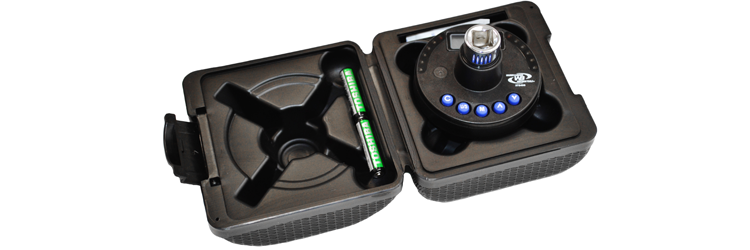How to Understand Angular Torque and Torque to yield?
News - June 17, 2022

Angular torque, also known as torque to yield, is widely used in modern motor vehicles, particularly for cylinder head bolts, main bearing caps, and suspension components. This method has been employed for decades throughout Europe in assemblies using composite materials such as cast iron cylinder blocks and aluminum cylinder heads. In Australia, angular torque specifications became prominent with models like the EA Falcon and Holden Gemini, marking a significant shift in design and manufacturing approaches.
The Challenge of Composite Materials
Composite materials present a unique challenge due to the different coefficients of linear expansion between iron and aluminum. Aluminum expands and contracts to greater proportions and at a faster rate, creating difficulties in maintaining proper head gasket seals during engine temperature changes. Conventional head bolts require precise torque specifications to create enough stretch for sufficient clamping force while staying within the bolt's elastic limit.
How Conventional Bolts Work
Conventional bolts are designed to provide adequate stretch for maintaining correct clamp load while remaining within their elastic limit. This allows the bolt to return to its static dimensions when reused. The bolt's attempt to return to its static length while installed creates the necessary clamp load on the gasket. Early Sigma cylinder heads demonstrated this principle when overheating caused softening of the cylinder head, allowing bolts to return to original length, reducing clamp load and causing gasket failure.
Advantages of Torque to Yield Bolts
Compared to conventional bolts, torque to yield head bolts offer engine manufacturers several advantages:
- Greater flexibility in design
- Reduced component costs
- More accurate torque specifications
Engine designs using torque to yield bolts require fewer bolts to achieve desired clamp loads, giving manufacturers more flexibility in cylinder head and block design while reducing engine costs.
Torque Efficiency and Friction
The accuracy of torque applied to yield bolts is more easily controlled as they experience less friction loss than conventional head bolts. When using a torque wrench directly on conventional bolts, friction loss can reach up to 90% (45-55% from head friction and 35-45% from thread friction), leaving a clamping force as little as 10% of the applied torque.
Important Considerations for Engine Repair
While torque to yield bolts are cost-effective for manufacturers, engine repairers must understand their limitations. Unlike conventional head bolts, which typically don't need replacement unless damaged, torque to yield bolts deteriorate by design and should never be reused.
The Four Phases of Bolt Loading
When a bolt comes under load, it goes through four main phases:
- Elastic phase: The bolt stretches but returns to original condition when load is removed
- Plastic phase: The bolt becomes permanently stretched and cannot recover its original length
- Yield point: The transition between elastic and plastic phases
- Shear point: Where the bolt breaks if load continues to increase
Proper Torque to Yield Installation Process
Torque to yield bolts are tightened in sequence through multiple stages. They are first tightened to a "snug torque value" to ensure components are firmly positioned. Further tightening is measured by angle of rotation rather than torque load. A typical specification might include:
- Tighten in stages and sequence to 40Nm
- Tighten in sequence to 90 degrees
- Tighten in sequence a further 90 degrees
Why Measuring by Degrees Matters
Measuring rotation in degrees instead of applied torque ensures that friction doesn't interfere with the tightening process, allowing for even clamp load. Unlike conventional bolts, torque to yield bolts are deliberately tightened beyond their elastic range, past the yield point, and into the plastic phase, resulting in permanent stretching.
The Importance of Following Manufacturer Specifications
Due to permanent stretching, torque to yield bolts should never be reused. Their reliability is significantly reduced after initial use, and reusing them causes additional stretching that can lead to failure. Always follow manufacturer specifications and use proper tools like Electronic Angular Torque Wrenches and Angular Torque Gauges for these applications.
